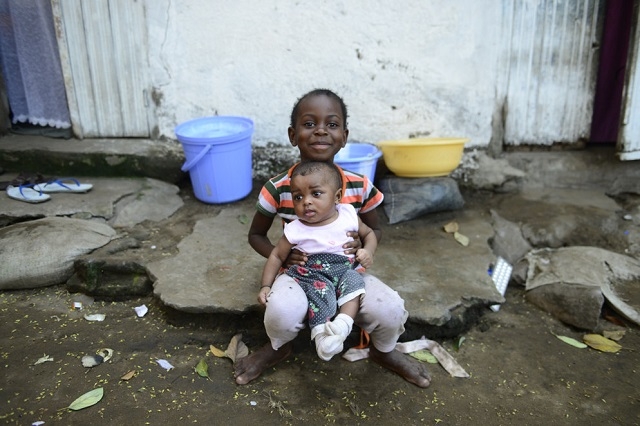Who Faced A Greater Risk Of Early Death Due To Water Contamination And Animal-borne Diseases?

In 2013, an estimated 6.iii million children under five died, 2.9 one thousand thousand of them in the WHO African Region. This is equivalent to five children under five years of age dying every minute. Two thirds of these deaths can be attributed to preventable causes. A third of all these deaths are in the neonatal menses.
Pneumonia, diarrhoea, malaria and HIV are the main causes of death in infants and immature children. In the African Region, about 473 000 children die from pneumonia, 300 000 from diarrhoea, and a further 443 000 from malaria every twelvemonth. In 2012, 230 000 new HIV infections were recorded among children under 5 years of age.
"Although tremendous progress has been made in identifying and treating infants and children with HIV, much remains to be done to scale-up and sustain effective prevention, care and treatment, specially of pneumonia and diarrhoea," said Dr Matshidiso Moeti, WHO Regional Director for Africa.
Pneumonia is the single biggest killer of children worldwide, accounting for nearly one in 7 deaths among young children, with an estimated over 950 000 deaths annually. Most of the deaths occur in resource-constrained countries, with 50% in sub-Saharan Africa.
Globally, diarrhoeal diseases business relationship for near 1 out of every half dozen deaths in children under 5 years of age, equivalent to over 578 000 deaths per year. Diarrhoeal disease occurs more commonly in HIV-infected people, with worse outcomes than in uninfected children. Persistent diarrhoea in particular is associated with a high risk of decease in HIV-infected children. Assistants of oral rehydration and zinc in combination with antiretroviral therapy (ART) and restoring immune function are critical for the handling of diarrhoea in children with HIV.
"Undernutrition is another critical take a chance factor in almost countries in the African Region, and diet and nutrient security remains a fundamental claiming to child survival. Breastfeeding is ane of the best ways to provide newborns, infants and young children with the nutrients that they demand while protecting them confronting conditions like pneumonia, diarrhoea and undernutrition," Dr Moeti added.
The World Health Organization (WHO) recommends that sectional breastfeeding starts within one hr after birth and lasts until a babe is half dozen months old. Continued breastfeeding and appropriate complementary foods should be made available for upwards to two years of age and beyond.
In mid-2013, WHO issued new guidelines for breastfeeding and the prevention of mother-to-kid transmission (PMTCT) of HIV. These recommendations were intended for utilise in resource-poor settings in low-and heart-income countries.
One of the recommendations for PMTCT is to promote the use of ART in all pregnant and breastfeeding women. These recommendations also include providing Art - irrespective of one'due south CD4 count - to all children under five years of age with HIV, all pregnant, and all breastfeeding women with HIV including their infants until they cease to breastfeed.
Health systems in Africa are often not able to adequately address the severe burden of babyhood affliction. Low total wellness expenditure with loftier out of pocket health costs hamper progress in child survival. Hence just as wellness tin drive economical growth, ill-health can push people into poverty and make it very difficult for them to escape the vicious bicycle of poverty and disease.
WHO will continue to work with governments and partners to strengthen wellness systems to reduce unacceptably loftier infant and child deaths in the African Region.
______________________________________________
For more than information, please contact:
Technical contacts:
Dr Kasonde Mwinga; Tel: +472 413 9189; Email: mwingak [at] who.int
Dr Phanuel Habimana; Tel: +472 413 9407; Email: habimanap [at] who.int
Media contact:
Dr Cory Couillard; Tel: + 472 413 9995; E-mail: couillardc [at] who.int
Source: https://www.afro.who.int/health-topics/child-health
Posted by: arndtthemen.blogspot.com

0 Response to "Who Faced A Greater Risk Of Early Death Due To Water Contamination And Animal-borne Diseases?"
Post a Comment